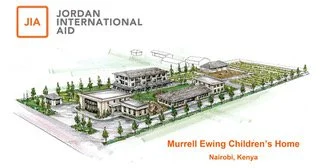
Whatever it is, the way you tell your story online can make all the difference.
JIA Africa
For the past 8 years JIA has been involved in supporting local projects in Kenya, Africa. In 2007 we were registered with the local authorities as JIA Kenya. We have yearly Medical and Non-Medical Mission opportunities to provide help to the most undeserved communities in Kenya.
The Republic of Kenya is in East Africa and boasts a population of nearly 44 million people. Bordered on the east by the Indian Ocean, the countryside gives way to tropical savannah grasslands as one moves westward. Kenya is a major economic force in eastern and central Africa, but this is very deceiving. On the Human Development Index of nations, Kenya is rated at 143 out of 185 countries, putting it in the lower third of all countries. Over 50% of Kenyans life in “absolute poverty” (defined as living on less than $1 (US) a day.)
In spite of the richness of scenery and wildlife for which Kenya is famous, Kenya is a struggling country with glaring problems. Drought is a huge, recurring problem. The lack of water does not allow for enough food to be grown to feed the people of Kenya; starvation is a rampant reality. HIV/AIDS is another major issue. In addition, child labor is very common in Kenya; most children work in agriculture. In 2006, UNICEF estimated that up to 30% of Kenyan girls in the coastal area are prostituted (human sex trafficking). On the medical side, there are only 7000 doctors to treat the 44 million people who live in country. Life expectancy is not increasing – it is declining, with an average life expectancy of only 55 in 2009 (a decline from age 60 in 1990). Infant mortality is appalling – 44 out of every 1000 children will die before reaching age five (compared to 6.8 in the United States). Preventable diseases like malaria, HIV/AIDS, pneumonia, diarrhea and malnutrition are the biggest burden on the poor and the major contributors to early childhood death.
In 2005, Jordan International Aid (JIA) fed a village during a drought crisis that year. In 2006, JIA brought in a team and distributed food and supported a local orphanage in Emali. In 2009, HIA helped a local school build a classroom, and provided school uniforms and supplies for the school children.
JIA Kenya Headquarters Center
JIA is currently in the process of buying 5 acres of land in Nairobi. This land will house the Murrel Ewing children’s home that will be combined with volunteer compound that will house volunteers who will have the opportunity of serving the children’s home and serving the surrounding local communities. Will you be part of the future for Kenya?
JIA Asia
Jordan International Aid (JIA)’s presence in Cambodia is relatively new. This nation of nearly fifteen million is located on the Indochina Peninsula in southeast Asia. Home to the Khmer Rouge led by Pol Pot, the country became infamous as the home of the “Killing Fields” where it is estimated that over 1,380,000 were executed outright in a genocide, with as many as 2.5 million of the 8 million population dying either by execution or starvation and disease as a result of Khmer Rouge policies.
While the quality of health and the life expectancy is rising in Cambodia, the mortality rate for children is 115 deaths per 1000 live births, with nearly 23 percent of all children dying before five years of age. UNICEF has ranked Cambodia as the third most “land mined” country in the world, a remnants of frequent wars conducted on its soil. HIV/AIDS, malaria and other diseases are prevalent.
In 2011, JIA (in a joint effort with the Cambodian Ministry of Health) provided medical aid to approximately 1800 children.
In 2012, JIA discovered a major medical need in a floating community. This community did not have medical care, and JIA was able to provide basic medical care to these families through the generosity of our donors; however, but more needs to be done.
In 2013, we re-opened a school in that same floating community. The school had been closed for three years, denying the children in this community an education. Education in these communities is vital in giving these communities a chance at improving their health and prospects for the future. The re-opening of the school involved restoring a floating building that was donated by UNICEF for this purpose over ten years ago. During the intervening years, the building deteriorated badly and began sinking – and since the community didn’t have the means to rescue the building, the school was forced to close. JIA worked hard to restore this building and with the involvement of community they have been able to take pride in the school and themselves for bringing a sense of achievement to their community. JIA is also empowering local leaders in the floating community by supporting teachers who are currently teaching at the school. As we search for ways of raising funds to keep the school operating for years to come, this includes supporting our local teachers, we can use your help.
Why is this education project so important? Because one of the root causes of the child sex trade in Cambodia is the lack of education that leaves children and their families without a means of support. The result is that children are sold into the sex trade.
If this mission and the plight of the people of Cambodia speak to your heart, you can give here.

